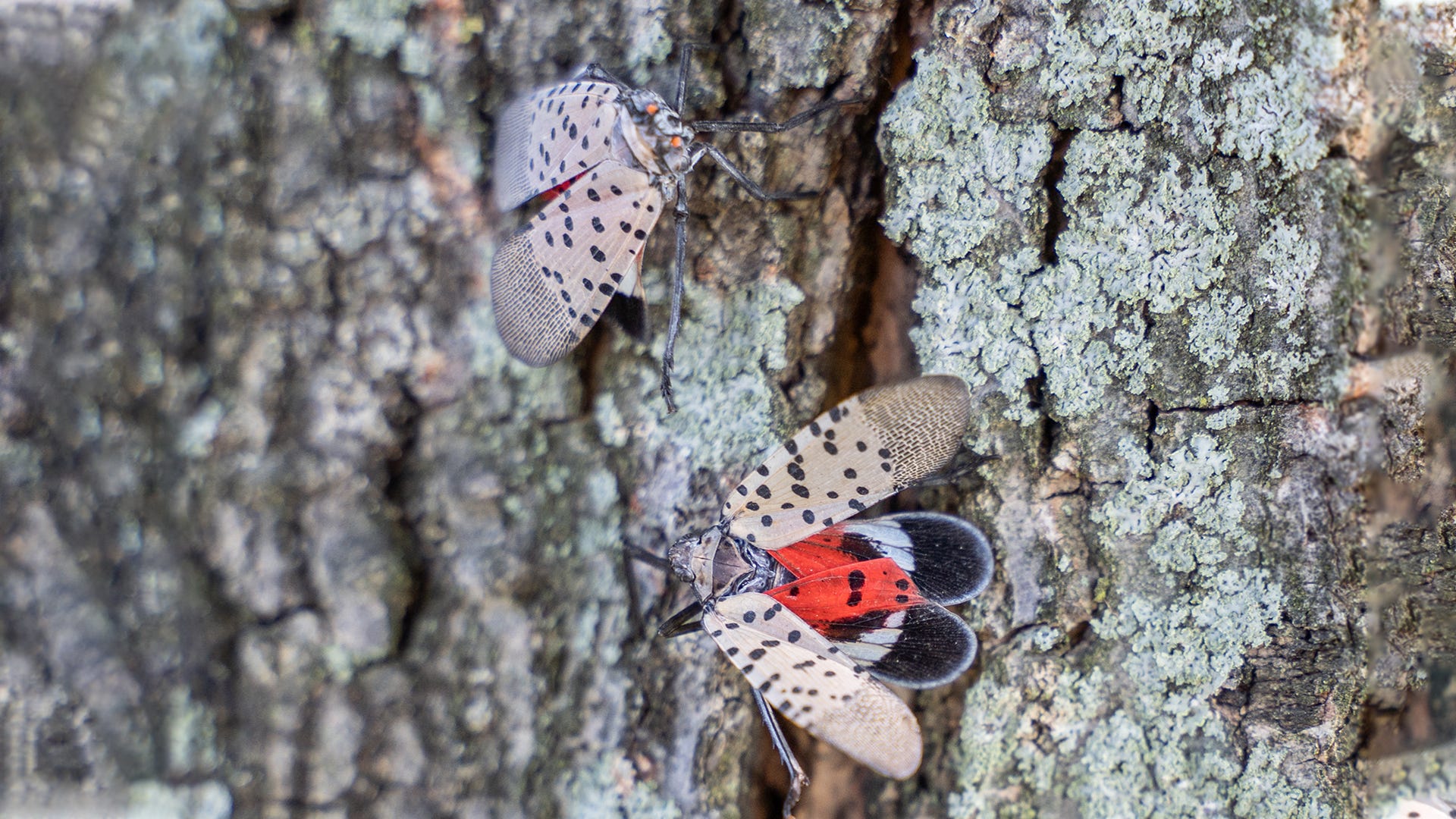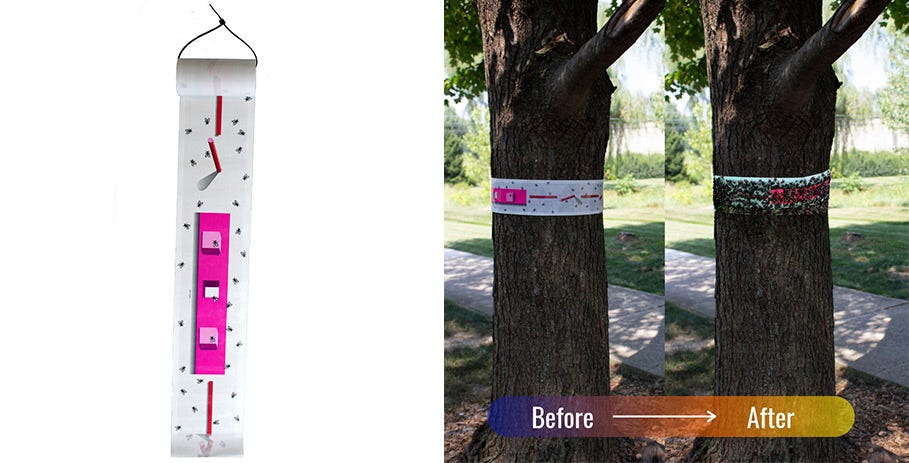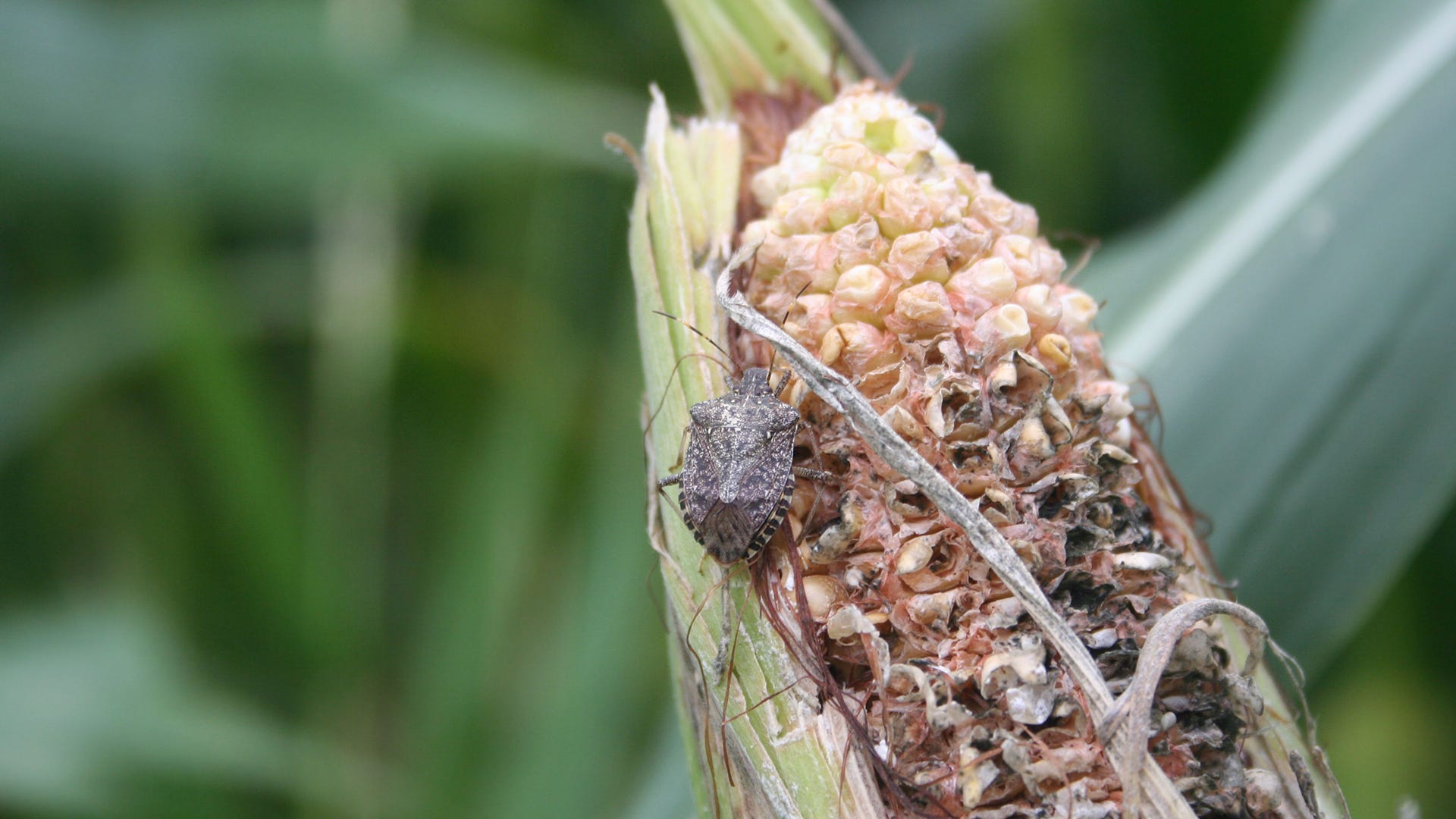The spotted lanternfly, a recent invader of Pennsylvania and surrounding northeastern states, is taking a huge toll on grapes, orchards, and trees. Not only is this fly species damaging crops and hardwoods but it is reducing the quality of life for people living in these heavily infested areas among the northeast. While it seems like they are taking control, we are smarter, and we can help put a stop to this invasive species.
HOW DID THEY GET HERE?
To defeat the enemy, it’s important to learn about its history to best plan an attack. The spotted lanternfly came over from China, India, and Vietnam where it lives natively. These flies like to catch a ride on shipments coming over to the US on trucks, boats and can hide in pallets that hold imported products. In 2014, the first sighting of a spotted lanternfly was in Berks County, PA. Now, millions of dollars have been spent on research and eradication efforts to rid this invading species from the 13+ counties it inhabits now. These flies can be found mostly on trees, especially the "Tree of Heaven" which appears to be a favorite. Regardless, we want you to be aware because they can travel on your car from a hike, or from a truck, or on a bookbag.
WHY ARE THEY SO TERRIBLE?
This intriguing lanternfly doesn’t look harmful really, but upon understanding its habits experts see why its something to be so wary of. When the spotted lanternfly feeds, it pierces a plant or bark to drink the sap, while they do this, they also are excreting a very sticky waste often referred to as “honeydew”. When they extract sap from stems and leaves, they are then weakening the plant causing possible and likely death of the plant since photosynthesis is weakened. The “honeydew” secretion also hurts plants as it encourages mold growth.
STAGES OF LIFE
To find and catch the enemy, familiarize yourself with its many stages of life. This insect is indeed one that varies forms through its life and can look so wildly different from when it is a baby nymph to a full adult. The first signs of this fly begin as eggs. This is hard to find but looks like a slimy mound or mass on a tree trunk, then it appears to look more hardened or dried out over time as Spring begins. Once April rolls around the eggs hatch and the young nymphs emerge as a black and white spotted beetle-like creature. By summer the flies gain a bright red hue into their exoskeleton then begin to grow wings. By the fall the lanternfly is fully grown and will appear to be a small moth about 3 inches wide on average.

HOW YOU CAN HELP
Finally, now that we know the enemy, we can plan on how to catch, control and destroy the invasive species: the spotted lanternfly. One of the best things you can do is be aware that they are out there. Be aware and act. You can stop the spread in a few ways:
- Get rid of the eggs: Scrape the eggs off the trees, cement blocks, or other hard surfaces. Eggs will be present September thru May and you can scrape them off with a dull knife. Place into a plastic container filled with rubbing alcohol or even hand sanitizer and discard in the trash in the sealed container.
- Kill on contact: Keep in mind these flies can jump and fly so it might be difficult but try to kill them with your shoe or something hard. Then look for other lanternflies nearby.
- Banding Trees: Set a trap for the spotted lanternflies. Wrap TERRO® Fly Magnet Super Fly Roll onto your tree. This fly tape is extremely sticky and has 3D imagery print on it that will lure in the flies. Keep in mind though of other wildlife, like birds. In addition to wrapping the tree, you could add a large chicken wire mesh around the glue band to prevent other critters from getting stuck.
- Remove the Tree of Heaven: While the thought of removing trees is terrible, these trees grow so plentifully and really appear to be the favorite choice of food for the lanternflies so removing them is recommended. The Tree of Heaven is more scientifically known as Ailanthus altissima.
- Report your Sightings: This step is crucial, as the USDA is doing everything they can to control and minimize the spread of the flies. You can report any sightings of spotted lanternfly life here. You will likely be contacted by the USDA after so they can review the sighting and maybe investigate the area where it was found.
CONNECT WITH US
While the spotted lanternfly is not everywhere across the US, spreading awareness on this highly invasive species is important. Please consider sharing this article with friends and family so we can stop the spread of these lanternflies. Any other bugs bugging you? Share it with the TERRO® community the next time you visit us on Facebook. For more helpful tips like these, subscribe to our e-newsletter to learn more about our TERRO® products.





